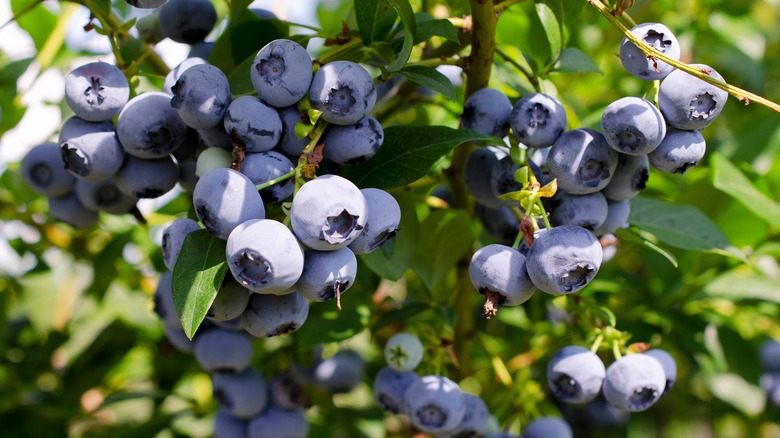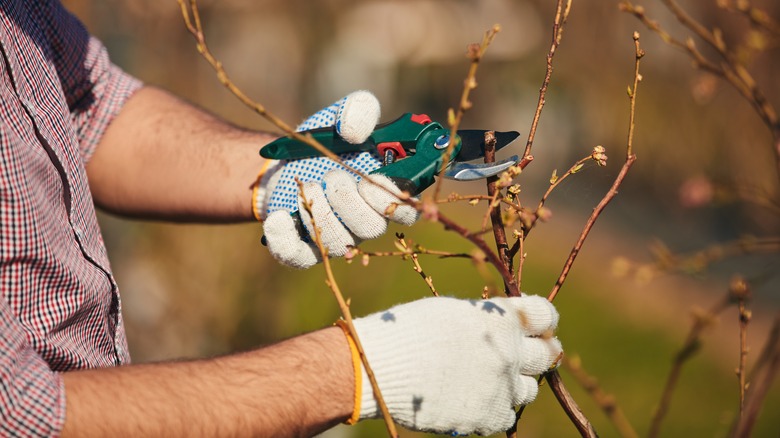The Essential Winter Task That Ensures A Healthy Blueberry Shrub Next Spring
Blueberries are a sweet and tangy summertime treat, and growing your own is a fun way to have access to the freshest berries around. Even though blueberries are a summer crop, that doesn't mean you should completely ignore your blueberry shrub in the winter. Winter is the ideal time to prune your blueberry plant to ensure it is as productive as possible, giving you the biggest and tastiest harvest.
As with other deciduous plants, blueberry bushes (Vaccinium spp.) are dormant during the winter months. This makes January through March a great time for pruning. Not only is the shrub unlikely to be bothered by pests that would infect it through the wounds, but it also won't respond to the pruning by immediately putting on new growth. In the case of autumn pruning, the new growth ends up getting damaged by freezing winter weather. Winter pruning helps remove old canes that are no longer productive, encouraging the growth of sturdy new canes that will yield bigger and better berries.
How to prune dormant blueberry shrubs for a bigger harvest
While pruning blueberry bushes is important, it's not something you should worry about too much in the first few years of your plant's life. It isn't until the shrub is around 3 years old that you need to do anything more than removing the growing tips and any diseased or damaged branches. Be sure to also remove any branches that are rubbing or crossing, as these can easily become damaged during this time.
Once your plant is three years old, you're ready to start removing all but a few of the healthiest and largest canes that grew in the last year. Blueberry canes are most productive when they are around 5 years old, and canes that are older than about 8 years old should be removed. Paying attention to the growth stage of your blueberry bush is important, as it ensures you're pruning the right branches.
While proper pruning goes a long way towards helping you grow a healthy blueberry plant, it's not the only step you should take. You should also test your soil pH to make sure it is acidic enough for blueberries to thrive, and consider lowering the pH level if it is above 5.0. Additionally, you can pair your blueberries with companion herbs.

